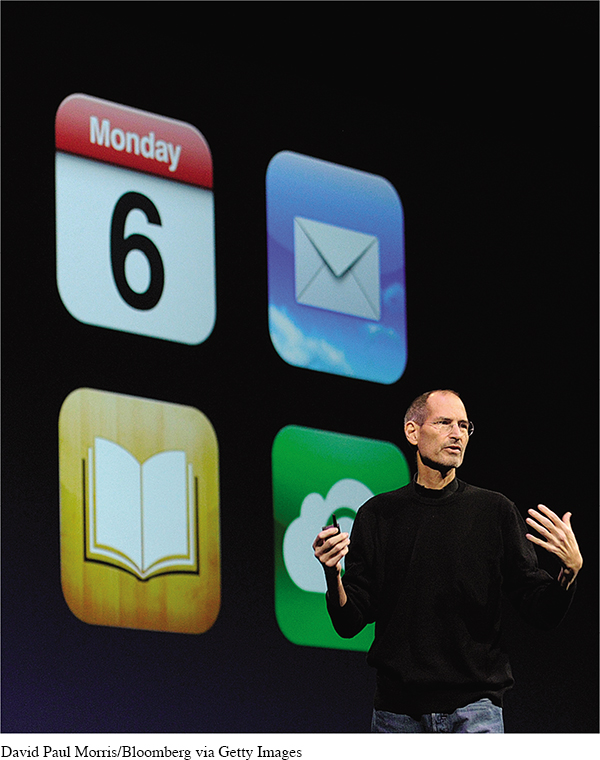13.1 Chapter Introduction
E verything Apple produces—iPhones, iPads, Apple Music, and Siri—reflects the extraordinary mind of the company’s cofounder, Steve Jobs. His vision of personal computing guided Apple’s success as it became one of the most profitable technology companies in the world. But Jobs also left his stamp on another thing Apple excels at—using compelling live and online presentations to introduce new products.
Unlike most companies that use television ads and social media to introduce products, Apple consistently turns new-product announcements into captivating public-speaking events. Jobs fueled consumer desire for new Apple devices by delivering presentations that many described as two hours of performance art filled with engaging talks, demonstrations, and celebrity appearances (Elkind, 2008). Watch any Apple presentation today, and you’ll see Jobs’s imprint on the way new products and services are presented.
What audiences and online viewers won’t see is the amount of preparation that goes into Apple presentations. Apple executives, like Tim Cook and Craig Federighi, spend considerable time thinking through which new products and services to feature, developing visual aids, planning ways of engaging the audience, and rehearsing the presentation. Their rigorous preparation results in a presentation that appears effortless. As Lashinsky (2013) observed:
Onstage, the keynote is a long collection of seemingly off-the-cuff remarks and live demonstrations. Behind the stage, Apple employees are a wreck. They’ve been rehearsing for months, leaving nothing to chance, assembling slides and photos and talking points to be whittled down into the presentation that is going on right now. (p. 123)
Apple delivers clear and powerful messages about its new products and services. Every presentation is carefully designed and prepared because Apple knows the importance of connecting with its audience—both those who attend in person and the hundreds of thousands who watch the product announcements online.
Page 319

David Paul Morris/Bloomberg via Getty Images
Page 320
Few people ever give a speech that attracts as much media scrutiny as does an Apple product announcement, but in the course of your life, you will inevitably give some presentations. Knowing how to properly prepare for such occasions will help you achieve success.
Public speaking is the process of preparing and delivering a message to an audience to achieve a specific purpose. Perhaps you’ll deliver a project-status briefing at work, or make a presentation asking a group of parents to volunteer for after-school activities at your child’s school. At the very least, you will likely give a speech for this class. This idea makes many people nervous, even though the speech may be days or weeks away. Don’t worry if you’re feeling unsettled at the mere idea of giving a speech; even Apple executives and employees feel this way! We’ll help out by discussing strategies for coping with public-speaking anxiety (pp. 392–394). For now, try to relax, and take comfort in the fact that you already know many of the communication principles and skills that support strong speech preparation. In this chapter, you’ll learn:
The five steps of speech preparation
How to select your speech topic
Ideas for analyzing your audience and adapting your topic to them
How to develop a strategy for researching your speech
Ways to conduct your research and evaluate your resources
